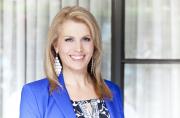As we age it is much more difficult to maintain muscle mass. Experts at the Mayo Clinic believe we need to be proactive about maintaining our strength. “If you don't do anything to replace the lean muscle you lose, you'll increase the percentage of fat in your body," says Edward Laskowski, M.D., a physical medicine and rehabilitation specialist at Mayo Clinic, Rochester, Minn., and co-director of the Mayo Clinic Sports Medicine Center. "But strength training can help you preserve and enhance your muscle mass — at any age."
The Mayo Clinic gives the following incentives regarding strength training:
• Develop strong bones. By stressing your bones, strength training increases bone density and reduces the risk of osteoporosis.
• Control your weight. As you gain muscle, your body gains a bigger "engine" to burn calories more efficiently — which can result in weight loss. The more toned your muscles, the easier it is to control your weight.
• Reduce your risk of injury. Building muscle helps protect your joints from injury. It also contributes to better balance, which can help you maintain independence as you age.
• Boost your stamina. As you get stronger, you won't fatigue as easily.
• Manage chronic conditions. Strength training can reduce the signs and symptoms of many chronic conditions, including arthritis, back pain, depression, diabetes, obesity and osteoporosis.
• Sharpen your focus. Some research suggests that regular strength training helps improve attention for older adults.
The National Osteoporosis Foundation believes that strength training is one of your primary defenses against osteoporosis, “These exercises include activities where you move your body, a weight or some other resistance against gravity. They are also known as resistance exercises.” Here is what they recommend:
• Lifting weights
• Using elastic exercise bands
• Using weight machines
• Lifting your own body weight
• Functional movements, such as standing and rising up on your toes
Below is a variety of exercises using various resistance tools. You should do 12-15 reps of each for two sets. Rest 30 seconds between each set.
BACK
Standing Reverse Fly
Loop band up high around sturdy object such as banister or post at shoulder height. Crisscross band and grip the handles one in each hand. Your feet should be spaced apart with one foot in front of the other and your knees slightly bent. Hold arms straight out in front of you with a side grip on band. Keep a slight bend in your elbows as you begin to pull your arms straight out to the sides of your body. Focus on pulling from the shoulders and not the elbows. Continue through the range of motion until your hands are in line with the sides of the body. Decrease tension slowly, while returning to the starting position and repeat.
Dumbbell Row
Place one hand on the back of a chair. Hold weight in opposite hand. Bring leg of weighted side back into a split stance. Bend over from waist, supporting your weight on chair. Keeping abs in, row elbows up high past rib cage, contracting side of back and lower back down. Alternate by switching legs and moving weight to other side.
Band Seated Side Row
Loop band around sturdy object. Have a seat on ball and hold band at waist level in a side grip. Row band back, pointing elbows behind and keeping elbows in tight.
SHOULDERS
Ball Dumbbell Side Raises
Sit on ball with dumbbells at sides in a side grip. Raise arms up to shoulder level, keeping a slight bend in elbow and wrists straight. Lower arms and repeat.
CHEST
Band Flys
Loop band around banister or sturdy object about shoulder height. Turn away from band grabbing each handle so band is behind you. Squeeze chest, pulling band in until hands meet, while keeping arms almost straight.
QUADS
Weighted Ball Squats
Place ball on a wall directly behind mid-lower back. Hold weights for added resistance in either hand at sides. Lean against the ball (slightly) and bend knees, lowering the body until knees are at a 90-degree angle. Push back to starting position.
Hamstrings
Hamstring Squeeze
Lie on back on floor and bend knees at 90 degrees resting legs on ball. Ball should be touching the back of you thighs. Trap ball in this position by squeezing it between your heels and buttocks. Slowly lift your lower body slightly off the floor. Hold and squeeze for about 5 seconds. Slowly lower ball back down.
TRICEPS
Dumbbell Tricep Kickback
Place one hand on the back of a chair. Hold weight in opposite hand. Bring leg of weighted side back into a split stance. Bend over from waist, supporting your weight on chair. Keeping abs in, row elbows up high past rib cage for starting position. Extend weight back, straightening arm and repeat.
Online References:
“Strength training: Get stronger, leaner, healthier – MayoClinic.com” Mayo Clinic. Web 17 Aug. 2011.
http://www.mayoclinic.com/health/strength-training/HQ01710
“Exercise For Healthy Bones – NOF.org” National Osteoporosis Foundation. Web 17 Aug. 2011.
http://www.nof.org/aboutosteoporosis/prevention/exercise
Reviewed August 18, 2011
by Michele Blacksberg R.N.
Edited by Jody Smith
Joanne Sgro-Killworth is a Television Fitness Expert, Certified Personal Trainer and Sport Nutritionist. She is Certified in Pilates, Pre-natal/Post-Partum, Yoga and Senior Fitness. She specializes in Weight Loss, Post-Rehab and Post Cancer Training. Joanne's fitness plans and recipes are available globally on her website www.fitnessanswer.com. She resides in the Phoenix, AZ area with her husband, where she runs her personal training business, Fitness Answer, LLC.



Add a CommentComments
There are no comments yet. Be the first one and get the conversation started!